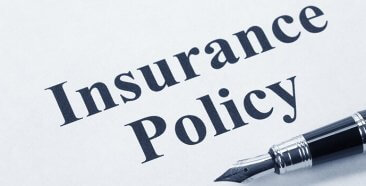
If you just bought a new car with a loan, your finance company may have given you information about comprehensive and/or collision. It’s the same with leasing. In both of these circumstances, you’ll most likely need to carry full coverage, which includes both of these and liability coverage.
But what is comprehensive coverage and collision and how are they different from other types of auto insurance policies? If you have the choice, for example if you paid cash for your new vehicle, should you get one, the other, or both?
In this article, we’ll walk you through the basic information about these types of insurance: how they’re different from other types of car insurance, the main difference from each other, which one you should get, and how to find information to buy cheap car insurance policies.
Is This Insurance Required?
It is not required by state law where you reside. Most states require motorists to have liability and some states also require uninsured motorist and some form of additional medical expenses, such as personal injury protection (PIP) or Medical Payments (MedPay). You can find out more information about state requirements here.
If you finance a new car, you may be required to purchase this protection.
What Does it Cost?
The annual average cost for comprehensive coverage is $160, while the average cost of collision is $363 per year. However, premiums are completely based on specific information that is mostly different for every person. These factors include where you live, your age, your gender, your driving record, the make and model of your vehicle and much, much more. So, your costs will likely be different than those cited.
Can I Purchase Them Separately?
For the most part the answer is yes, although you may have to shop around. Most carriers would rather have these two together. It’s easier to buy collision without comprehensive car insurance than the other way around at most insurers.
Protecting Yourself Beyond Liability
If you have the minimum insurance coverage in your state, then you likely have only liability insurance. Liability insurance helps pay other drivers and passengers to cover their medical and property damage if you’re at fault for an accident. In a no-fault state, your liability helps pay for your damages.
That means that if you damage your auto in an accident and are in an at fault state, then you’re on the hook to pay your own repair costs. It also means that if your ride is damaged and no one is at fault —such as when a tree falls onto your vehicle in a storm— then you’ll still need to pay for the repair costs.
But not everyone has the money to spend on a surprise repair bill, and most of us need our wheels in good condition to get to work or school. Both types of insurance coverages protect you regardless of who’s at fault, though they work in different ways under different situations.
Comprehensive Policy vs. Collision Insurance
What is Covered for a Collision Claim?
If you’re involved in an accident, then collision insurance covers the repair costs to your own vehicle, regardless of who’s at fault in the event. In these instances, these scenarios include:
- You’re involved in an accident with another driver.
- You hit a stationary object, such as a tree or a telephone pole.
The great thing about this protection is that you can make a collision claim regardless of who’s at fault. Most auto insurance policies will even cover repairs when a friend was driving at the time of the accident (you need to give them permission to use your vehicle).
Even if you feel that you’re not at fault for a car accident, you may want the option of making a claim with your auto insurance rather than waiting for the other driver’s liability insurance to pay for your repairs. That’s because insurers can take a while to gather information and determine fault in an accident.
In different situations involving complicated circumstances, it could take months and a court hearing to determine fault. In the meantime, you’re stuck with damages that might be unsafe or illegal to drive. Later on, if it does turn out that the other driver was at fault, then your insurance can file their own claim against the other driver’s liability insurance to get reimbursed. This would also mean that you’d get back your deductible.
What Does Comprehensive Cover?
Collision helps protect and cover you for a lot of traffic events, but only while you or someone else is driving. If something happens to your auto while it’s parked, then comprehensive insurance covers the damage, up to the value of your car. Typical comprehensive covers:
- Theft (including parts like the hubcaps or radio)
- Vandalism
- Fire
- Damage from wind, hail, flooding, storms and other natural disasters
- Damage from a tree branch, or pole falling
- Damage when you hit an animal (this type of damage is not included in collision)
In these instances, you can make a claim with your comprehensive insurance regardless of fault. However, keep in mind that it may be harder or impossible to claim if you were negligent — for example, someone stealing your automobile when you left the keys in the ignition. And intentionally leaving your ride in a situation where it could get damaged or totaled could lead to a denied claim as well as potential legal trouble.
Basic Parts of Collision Policies or Comprehensive Coverage Policy

Though collision policies and comprehensive insurance have some main difference, the policies themselves are structured similarly. The three major components are the deductible, policy limit, and premium.
Deductible
The deductible is the amount of money you agree to pay toward repairs or replacement before the insurance steps in. For example, if your repair costs are $2,500 and you have a deductible of $1,000, then you’re responsible for the first $1,000 of the repair costs while the insurance covers the remaining $1,500.
Policy Limit
The policy limit is the maximum amount the insurance company agrees to pay toward a repair, minus the deductible. Most insurance companies calculate the policy limit based on the market value of your vehicle, though you can always choose to pay less for a lower policy limit.
Premium
The premium is the amount you pay for insurance coverage and is based on how cheap your car is to insure. Remember that you need to pay your insurance premium whether or not you make an insurance claim. If you don’t, then the insurance may refuse to process a claim or cancel you altogether.
Do I Need Collision Coverage or Comprehensive Coverage?
These coverage types are not legally required in any state. However, suppose you finance or lease. In that case, the lender or leaser can require you to keep a minimum amount of full coverage until you pay off the auto loan or the lease term is over. That’s because the lender or leasing company still owns the car while you’re making payments, and the company wants to be financially protected.
If you don’t get contractually required coverage on your own, then the financing or leasing company can take out a policy on its own and force you to pay the bill. Before you sign a lease or loan agreement, it’s a good idea to make sure to read the fine print about insurance requirements and information so that you know exactly what kind of insurance they require.
When is it Not Necessary to Have These?
As with most policies, you should not carry it if it costs more annually than the vehicle is worth. Of course, that does not include your state law minimums. You have to carry those to be legal even if your auto isn’t worth the premium. But when looking at other options, don’t purchase it if your car isn’t worth the cost.
The other rule of thumb is to not purchase any coverage types if the premium is equal to or greater than 10% of the your vehicle. For example, you should stop buying it if your premium is $100 annually and your car is worth $1,000.
In the end, it’s a personal decision you have control over and that is made based on your financial situation and where you live. If you are a safe driver, you can lower your monthly premium by not carrying coverage you really don’t need. If an accident happens and you didn’t cause it, then the other person’s liability coverage should pay for your repairs. If you don’t live in an area with high crime rates, you may not need extra protection. You can also help to keep your premiums low by not filing claims when you can cover the cost of repairs out of pocket. If that’s out of the question and you do not have cash to pay for repairs, then extra protection might be worth the cost and the peace of mind.
It’s a balancing act. It’s a good idea to always check with your agent to make sure you are getting the lowest price through available discounts.
Comprehensive vs. Collision Insurance: Either Way, Why Pay More?
Whatever you decide on comprehensive vs. collision insurance, you shouldn’t have to pay more than you have to for insurance. At Freeway, we believe that everyone deserves affordable car insurance, regardless of your driving record or ability to pay. Why not check now for a free collision or comprehensive insurance quote? Or you can visit one of our offices or give us a call at (800) 777-5620.



